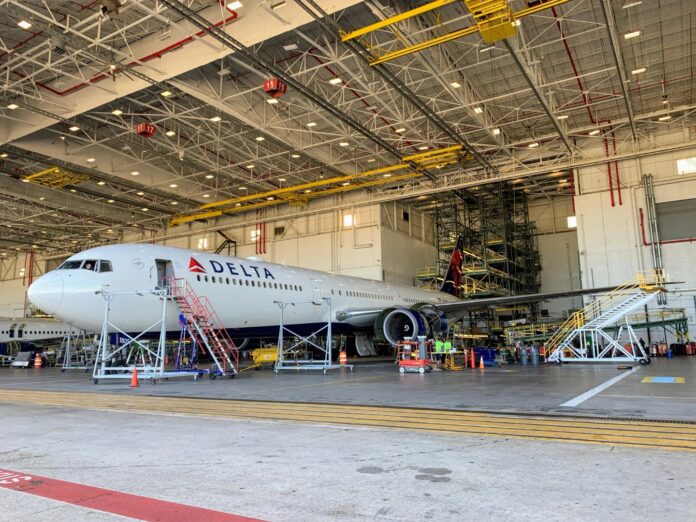In the dynamic world of civil aviation, where precision and performance intertwine, one of the most critical decisions airlines face is fleet management. The aircraft that adorn an airline’s livery are not just symbols of its brand; they are the workhorses that power its operations. Balancing the scales between efficiency and diversity is a delicate dance that requires strategic foresight, financial acumen, and a deep understanding of market dynamics. Join us as we delve into the intricate world of airline fleet management, exploring how airlines strive to find the perfect equilibrium between optimal efficiency and a diverse fleet.
Defining the Strategy: The Heart of Fleet Management
At the core of every successful airline’s operations lies a carefully crafted fleet management strategy. This strategy serves as the roadmap that guides the airline’s decisions on aircraft types, sizes, and quantities. The goal is to align the fleet with the airline’s business model, routes, and passenger preferences. In essence, fleet management is about selecting the right tools for the job – ensuring that each aircraft in the fleet is well-suited to fulfill its role.
Efficiency Reigns: The Pursuit of Economies of Scale
Efficiency is a cornerstone of fleet management, and airlines often seek to achieve economies of scale by operating a homogeneous fleet. This approach involves choosing a single aircraft type, or a limited number of closely related types, for most of the fleet. Homogeneity simplifies training, maintenance, and operational procedures, as crews and mechanics become experts on a specific aircraft model. This streamlined approach can lead to cost savings in terms of training, spare parts, and maintenance procedures.
The Benefits of Fleet Commonality
Fleet commonality, achieved through the use of similar aircraft, allows airlines to optimize their resources. Spare parts are interchangeable, reducing the need for extensive inventory. Maintenance facilities can specialize in a particular aircraft type, enhancing expertise and efficiency. Additionally, crew members can transition between aircraft more easily, further minimizing training costs.
Diversity’s Advantages: Flexibility and Market Penetration
While fleet commonality offers undeniable benefits, some airlines choose to introduce diversity into their fleets. This diversity comes in various forms – from different aircraft sizes to varying manufacturers and configurations. The primary advantage of a diverse fleet is flexibility. Airlines with a range of aircraft can adapt to different route demands, seasonal fluctuations, and changing market dynamics. This adaptability enables airlines to seize opportunities and optimize revenue.
Tailoring Aircraft to Routes: Right-Sizing the Fleet
Airlines aim to “right-size” their fleet by matching aircraft to specific routes. This involves considering factors such as passenger demand, distance, and frequency of flights. For shorter routes with lower demand, airlines might deploy smaller, more fuel-efficient aircraft. Longer routes with higher demand might call for larger, wide-body jets. By tailoring aircraft to routes, airlines can optimize capacity, reduce costs, and enhance the passenger experience.
Fleet Renewal: Embracing Technological Advancements
The aviation industry is constantly evolving, with new technologies offering more fuel-efficient, environmentally friendly, and technologically advanced aircraft. Fleet renewal involves replacing older, less efficient aircraft with newer models that offer better performance and operational savings. This process can significantly impact an airline’s bottom line by reducing fuel consumption, maintenance costs, and emissions.
The Role of Leasing and Acquisition
Acquiring aircraft is a significant investment, and airlines must carefully weigh their options. Some airlines choose to lease aircraft instead of purchasing them outright. Leasing offers flexibility, as airlines can adjust their fleet size and composition more easily in response to market changes. Additionally, leasing allows airlines to access new aircraft without the initial capital outlay required for purchasing.
Market Demand and Passenger Experience
An airline’s fleet composition is intrinsically linked to market demand and passenger preferences. As passenger expectations evolve, airlines must invest in aircraft that offer modern amenities, enhanced in-flight entertainment, and increased comfort. The choice of aircraft can influence an airline’s reputation and its ability to attract and retain customers.
Sustainability and Environmental Considerations
In an era of heightened environmental consciousness, airlines are under increasing pressure to adopt more sustainable practices. Fleet management plays a pivotal role in this endeavor. Airlines are exploring options such as fuel-efficient aircraft, alternative fuels, and hybrid-electric propulsion systems to reduce their carbon footprint. Balancing environmental responsibility with operational efficiency is a challenge that fleet managers must address.
Navigating Uncertainty: Planning for the Future
The aviation industry is no stranger to uncertainty. Market fluctuations, geopolitical events, and technological advancements can all impact an airline’s operations and strategic decisions. Fleet managers must maintain a delicate equilibrium, anticipating future demands while remaining agile enough to adjust course as needed.
Conclusion: The Symphony of Skyward Success
As aircraft take to the skies, each bearing the colors and insignia of its airline, they are a testament to the intricate art of fleet management. Balancing efficiency and diversity requires the wisdom to foresee trends, the courage to invest in innovation, and the ability to adapt to a constantly changing landscape. Airlines that master this symphony of strategic decisions are those that continue to soar, connecting passengers, cultures, and dreams with the magic of flight.
























